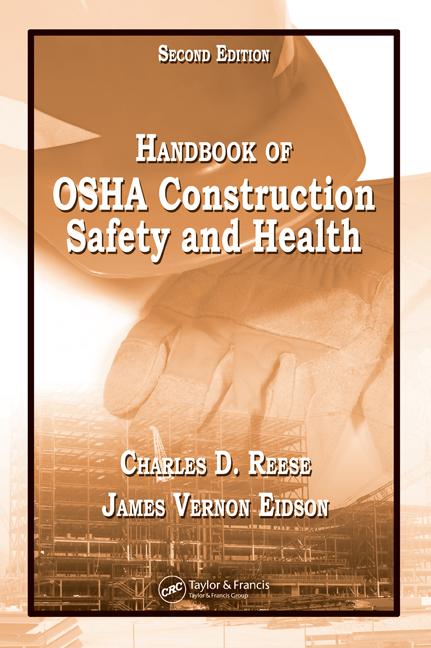Why is heat top of mind for OSHA, workers and employers?
A breakdown of the factors could pose heat illness risks

coffeekai / iStock /Getty Images Plus
1. What are common facility features that could pose heat illness risks?
There are a number of facility features that can pose heat illness risks:
- HVAC systems: During peak times or extreme weather conditions, HVAC systems might not function properly and could lead to a facility overheating. Undersized, outdated, or poorly-maintained systems are more likely to increase the risk of excessive heat.
- Industrial machinery: Boilers, furnaces, heavy-duty motors, and production equipment all generate heat during production. When that’s combined with high ambient temperatures, it can create a hazardous environment for workers.
- Kitchens: Commercial kitchens usually contain multiple heat sources: ovens, stoves, grills, and fryers. When multiple heat-generating appliances all function at once, in a confined kitchen area, workers can suffer from intensely high temperatures.
- Data centers: High-density, power-hungry electronic equipment, like servers and routers, also generate substantial amounts of heat. Despite having cooling systems in place, heat-related shutdowns still occur and can impact tech workers.
- Warehouses and manufacturing floors: These large spaces are usually filled with workers and heat-generating equipment. When paired with high outdoor temperatures, it’s the perfect recipe for heat-related issues. Proper ventilation, regular maintenance checks, and modified work schedules can help manage heat risks.
- Personal protective equipment (PPE): Employees may be required to wear restrictive personal protective equipment when exposed to hazards while performing their duties. When restrictive PPE, like a paint suit, is combined with a high temperature exposure such as an enclosed painting operation, employees are more likely to suffer from a heat illness.
2. Why are heat-related risks top of mind right now for workers, OSHA and employers?
In early July 2024, OSHA proposed a federal rule to protect workers from extreme heat.
The rule would require a Heat Injury and Illness Prevention Plan to evaluate heat risks, regulate excessive heat and provide protections when necessary.
While OSHA has had a National Emphasis Program on heat safety since April 2022, the proposed rule would be an enforceable guideline on how companies must monitor their working environment for extreme heat.
If the temperature becomes hazardous for work (80° F is the current threshold in the proposal), employers must provide suitable protections. This could include access to one quart per employee per hour of drinking water, requirement for shaded breaks, personal protective equipment, annual training, and acclimatization requirements for workers not accustomed to heat.
This new rule from OSHA, paired with dangerously high summer temperatures across large swaths of the US, mean that heat safety will continue to weigh heavily on the public consciousness for some time to come.
3. What is OSHA currently doing to protect workers from heat-related illness?
Right now, OSHA can conduct pre-planned inspections of high-risk worksites on “heat priority days”, or when the “feels like” heat index is expected to be 80° For above.
During an inspection, the Certified Safety and Health Officer (CSHO) will review several heat illness-related compliance procedures and inspect certain logs and incident reports. This can include:
- Reviewing OSHA 300 Logs and 301 Incident reports.
- Evaluating workers for signs of heat-related illness, including headache, dizziness, and fainting.
- Determining if employers have an injury preparedness plan addressing heat exposure.
- Identifying activities as they’re relevant to heat related hazards.
If a CSHO determines that employees are not being adequately protected from heat hazards, citations can still be administered by utilization of the "General Duty Clause" of the OSH act.
By being proactive and implementing precautionary measures to prevent heat illnesses, employers can pass surprise OSHA inspections and build a safety culture among their workforce.
4. How can employers get ready for high summer temperatures at their facilities?
At KPA, we follow the “three P’s” for extreme weather preparation of any kind:
- Plan: Know that extreme weather will come. According to NOAA, the earth’s average temperature has risen by about 2 degrees this century. Fueled by greenhouse gasses, these warming patterns are likely to continue. Use the NIOSH/OSHA Heat Index mobile application. The app will inform you of the heat index of the outdoor conditions where you use the application.
- Prepare: Understand how employers’ current responsibilities under the NEP on Heat Illness Prevention will shift if OSHA codifies it into a permanent rule. Prudent employers will ensure heat safety programs are in place well before any potential fines start coming. Keep in mind that some states such as California and Washington have already enacted heat illness prevention plan requirements.
- Practice: Ensure your organization understands who is responsible for monitoring intense weather conditions, managing response protocols, and ensuring the availability of key safety equipment. All employees should also have a basic understanding of the five types of acute heat illness.
5. What are the common types of heat illness and how should workers respond?
Managers must be trained on heat illness symptoms, so they can assist their employees in times of crisis. When in doubt, call 911.
OSHA and the CDC categorize heat illness into five types but keep in mind that other acute symptoms can develop due to exposure heat.
- Heat stroke: Heat stroke is characterized by a high body temperature of 103 degrees or higher, and symptoms can include hot, red skin and a fast pulse. If a worker is suspected to be suffering from heat stroke, you should call 911 right away.
- Heat exhaustion: Workers suffering from heat exhaustion usually have cold, pale skin and a fast, weak pulse. They should be moved to a cool place where they can sip water. Call 911 if they’re throwing up, symptoms worsen, or they don’t improve after one hour.
- Heat cramps: When accompanied by intense physical activity, muscle pain or spasms can indicate heat cramps. Stop physical activity immediately and move to a cool place. Get medical help if they last longer than one hour.
- Heat rash: Red clusters of small blisters can form heat rash. To remediate the issue, move to a cool place, keep the rash dry, and use baby powder to soothe the skin.
- Heat syncope: Fainting that occurs after standing for a long period of time or a sudden rise to a standing position. Signs of heat syncope include lightheadedness and or dizziness which develop from dehydration and a lack of acclimatization.
Looking for a reprint of this article?
From high-res PDFs to custom plaques, order your copy today!








